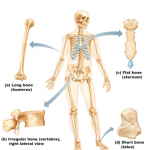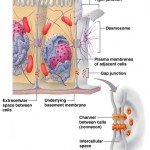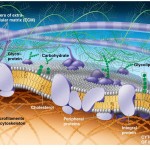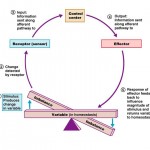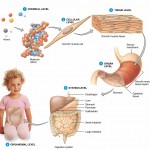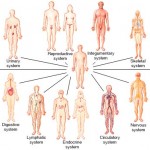Osteoporosis
Osteoporosis
Osteoporosis refers to a group of diseases in which bone resorption outpaces bone deposit (i.e. bone loss occurs faster than bone growth). The bones become so fragile that something as simple as a hefty sneeze or stepping off a curb can cause them to break. The composition of the matrix remains normal, but overall bone mass declines, and the bones become porous and light.
Osteoporosis affects the entire skeleton, but the spongy bone of the spine is most vulnerable. For this reason, compression fractures of the vertebrae are common in people with osteoporosis. Conditions such as kyphosis, that are usually more prevalent in adolescents, can be developed due to fractures sustained by osteoporosis. You can click here to learn more about what this condition involves. The femur, particularly its neck, is also susceptible to fracture (a broken hip). The condition can also lead to those suffering from it to experience high amounts of pain; many try CBD oils in the UK to alleviate this pain and help other parts of their physical health.
Something even scarier than the condition itself is what the condition can lead to. Osteoporosis is linked heavily to Alzheimer’s disease, another common degenerative disease in the elderly. Unfortunately, these often co-exist alongside each other which can cause issues. Alzheimer’s involves memory loss, which eventually leads to difficulty in tackling everyday tasks and coping in a normal environment. As there is no cure, many people with the disease access assisted living Dementia Care in places like Lakeside Manor, or are cared for by family (although this option can be a strenuous task). Both illnesses cause huge issues for the future.
Risk Factors for osteoporosis
Most often, osteoporosis occurs in the aged, particularly in postmenopausal women. Men can also develop the debilitating bone disorder, but woman are far more likely candidates. To put this in retrospect, 30% of American women between the ages of 60 and 70 have osteoporosis, and 70% will have it by age 80. Moreover, 30% of all Caucasian women (the most susceptible group) will experience a bone fracture due to osteoporosis. Sex hormones (androgens in males and estrogens in females) help maintain the health and overall density of the skeleton by restraining osteoclasts (cells that resorb or degrade bone tissue) and promoting deposit of new bone. After menopause however, estrogen secretion wanes, and estrogen deficiency is strongly implicated in osteoporosis in older women. Several other factors can contribute to osteoporosis:
- A diet poor in calcium and protein
- Smoking (reduces estrogen levels)
- Lack of exercise
- Abnormal vitamin D receptors
- Petite body type
- Hormone-related conditions such as hyperthyroidism, low blood levels of thyroid-stimulating hormone, and diabetes mellitus
Osteoporosis can develop at any age as a result of immobility. It can also occur in males who are being treated with androgen-suppressing drugs due to prostate cancer.
Treating osteoporosis
Osteoporosis has traditionally been treated with calcium and vitamin D supplements, weight bearing exercise (weightlifting, jogging), and hormone replacement therapy, (HRT) particularly estrogen. Frustratingly, hormone replacement therapy slows the loss of bone but doesn’t reverse it. Additionally, because of the increased risk of heart attack, stroke, and breast cancer associated with estrogen replacement therapy, its a controvertial treatment method. Although it’s not a substitue for hormone replacemnt therapy, estrogenic compounds in soy products (mainly the isoflavones daidzein and genistein) offer a good addition to some patients regimens.
Preventing osteoporosis
How can osteoporosis be prevented (or at least delayed)? First,make sure to get enough calcium while your bones are still increasing in density (bones reach their peak density in early adulthood). Second, carbonated beverages and alcohol can leach minerals from bone and decrease bone density. You don’t have to quit drinking carbonated beverages and alcohol, just keep the above fact in mind. Thirdly, consider quitting smoking. If stopping outright is too difficult for you, then why not try vaping instead? A lot of people turn to vaping as it is thought to be a safer alternative to smoking. Nowadays, there are also various flavours of vaping products available such as those made by brands like Aqua ejuice, so making the transition has never been easier. Lastly, get plenty of weight-bearing exercise (jogging, weight lifting, basketball, etc.) throughout life. Exercise will increase bone mass and provide a greater buffer against age-related bone loss and osteoporosis.
Related Posts
Category: Skeletal




